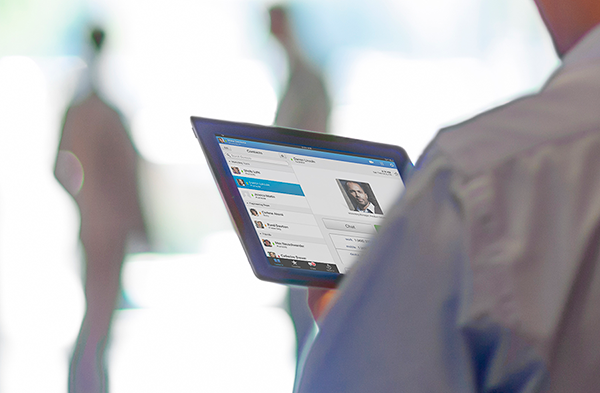The Cisco IM client, better known as Jabber, takes instant messaging up a notch to provide video and audio communications. Plus it gives connections to the overall Cisco communication infrastructure, like voicemail and conferencing. It also brings simplification and mobility. Jabber provides what WebEx does not, which is work on any client: Windows, Mac, iPhone, iPad, BlackBerry, Android, and the web.
The Jabber Open Communication Standard
This is something of an aside and historical footnote. Unless you are a grey-haired IT old timer, you probably don’t know that Jabber, released in 1999, is the original chat software and open source communications protocol, called XMPP. That means Jabber is interoperable with other chat platforms, such as Google Talk and Facebook, both of which are based on XMPP. So you could use your favorite IM client, such as Pidgin, and add your Facebook, Google Talk, or Cisco Jabber account and communicate between platforms.
Yet actually doing this across the enterprise with Cisco Presence would not be too practical or common, because XMPP does not work over SSL.
Nonetheless, keeping that alive, Cisco took over the open source Jabber project and maintains it for the public and its own products.
The Jabber Telephone Number
Going back to the topic of Jabber for the integrated office, Jabber also frees users from their desktop. Therefore, users do not need to sit at their desk to get video calls or text messages. The system provides users a single phone number that follows them wherever they go.
That number is different from the regular phone number associated with the desk phone. Voice calls over the POTS (Plain Old Telephone System) as well as Cisco IP phones go to the desk phone or cell phone. Jabber calls follow the Jabber client.
To make this work, the employee has a single phone number in their Cisco Unified Communications (CUCM) account. Jabber associates that with a desktop. The employee then assigns that number to his or her mobile device.
All of this is integrated with the Cisco Directory and Web Directory. This lets people click to call.
Secure Communications
Jabber provides a level of security that would not be available over the public internet using XMPP chat clients.
It does this with SSL and servers and networks like the Cisco Expressway-E gateway. One perk of that is it does away with the need for VPN. VPN can be an administrative headache for IT that requires creating a process for provisioning accounts. Plus it requires maintaining the sometimes problematic VPN network and servers.
Optimized Video for Virtual Desktops
Something new yet more common in the enterprise is Desktop as a Service (DaaS), using products like XenDesktop or VMWare. While DaaS simplifies IT, it brings challenges regarding audio and video.
DaaS means giving users a virtual desktop that is ready to go with preloaded applications like Microsoft Office or SaaS applications. Employees connect to those from stripped-down, bare-bones PCs or tablets.
This brings the traditional desktop to employees without suffering the IT burden of setting up and maintaining those. So it does away with, for example, having to send the IT guy around to the office to fix problems.
Yet running video communications on the DaaS virtual desktop is an awkward fit.
Cisco Jabber and Microsoft Skype for Business (formerly called Microsoft Lync and Office Communicator) are CPU-intensive apps that are made to work with local video and audio devices. But there are no local video and audio devices in the cloud. Thus there is no place to output sound for a virtual server in a distant data center. Instead, that is sent over the wire to the local device.
Microsoft and Cisco have both worked through all of this and figured out how to smoothly deliver video to virtual desktops.
Microsoft uses the HDX RealTime Optimization Pack for Microsoft Skype for Business. And Cisco’s product is the Virtualization Experience Media Edition (VXME). The idea with each is to offload video processing to a media server instead of the virtual desktop. That makes for a smoother video and audio experience that doesn’t need a lot of computing power on the virtual desktop.
Use Case: Practice What You Preach
Finally, Cisco has migrated all of their employees and offices onto the Jabber IM. They explain here how and why they did all of that. One of their goals was to replace WebEx, which can require dedicated cameras, depending on how it is deployed, yet still mesh with other Cisco products, like Collaborative Meeting Rooms.
